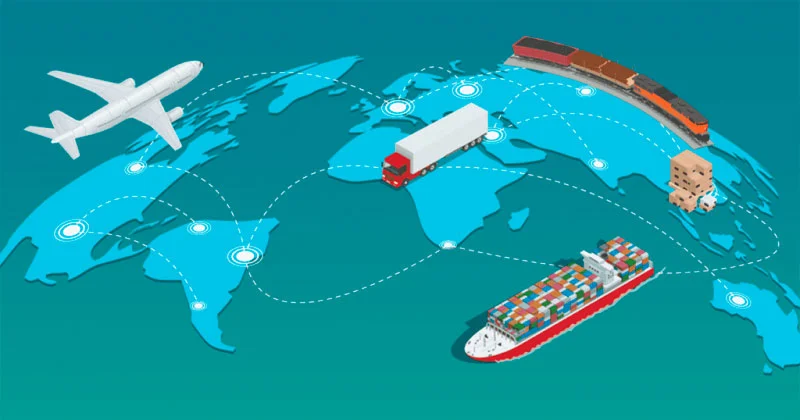If you accept the difference in scope, you could quickly realize that the two can probably complement one another, quite than compete. Explore the distinctions between a proxy and a reverse proxy, their capabilities, and importance in network environments. Discover the professionals, cons, uses SOA vs Microservices, and various varieties of both, alongside real-world examples.
- In fact, it’s common to have a service component inside SOA represented by a big product or maybe a subsystem.
- This Polyglot Persistence mannequin enables providers to utilize different database applied sciences greatest suited to their particular needs, distinguishing microservices from the centralized knowledge governance in SOA.
- In the context of Microservices, it refers to a service that has a clear boundary and is liable for a particular enterprise function.
- SOA and microservices are both approaches to architectural design that break functions into parts.
- Whether it is SOA, lauded for its business-centric methodology, or Microservices, acclaimed for its adaptability and growth potential, the ultimate decision resides solely on your discretion.
- SOA sometimes relies on standard communication protocols like SOAP or XML for interoperability, with a concentrate on synchronous communication.
Soa Vs Microservices In A Nutshell
For some organizations, SOA structure is a stepping stone to switch the monolith, providing a more versatile and agile setting. SOA services can be developed and utilized in a big surroundings, but they don’t handle particular wants of particular person companies that need to handle enterprise processes inside their purview. DevOps can be utilized to help an organization transition from SOA structure to microservices to address specific wants. XML knowledge is a key ingredient for options which are based on SOA architecture. XML-based SOA applications can be utilized to construct net providers, for instance.
What’s Service-oriented Architecture (soa)?
Lightweight directory entry protocol (LDAP) is an open-standard and vendor-agnostic software protocol for each verifying users‘ identities and giving… Active Directory (AD) is the proprietary listing service for Windows area networks. The communication protocols utilized in SOA and Microservices also differ. In SOA, services talk with one another utilizing standardized protocols similar to SOAP (Simple Object Access Protocol) and REST (Representational State Transfer). In serverless apps, developers don’t want to worry about infrastructure.

The Significance Of Microservices Structure In Modernizing Functions For The Cloud
SOA’s structure helps intricate integration scenarios more successfully than microservices, making it significantly beneficial for organizations with in depth legacy techniques. Service-Oriented Architecture (SOA) is a design sample the place companies are provided to different parts by utility elements, via a communication protocol over a network. The primary concept of SOA is to permit simple integration of varied services into new purposes, providing a flexible framework for utility development. In SOA, services usually share a standard information storage, leading to potential coupling and knowledge consistency points. Microservices follow the Database per Service sample, the place every service manages its own data storage, making certain data autonomy and reducing the risk of service coupling.
The difference between an IAM position and a user is that a role may be briefly or permanently applied to a person to provide the user bulk permissions for a… An authentication bypass vulnerability is a weak point in the person authentication process. Your organization’s attack floor is a group of all the exterior factors where somebody may infiltrate your corporate network. Anomaly detection is the process of analyzing company data to search out knowledge points that don’t align with a company’s standard information… Advanced threat safety is a kind of cybersecurity devoted to preventing pre-planned cyberattacks, similar to malware or phishing.
Continuous Authorization is a security concept making certain ongoing validation of users‘ access rights within a system. A coverage engine is a software component that enables a corporation to handle, implement, and audit rules throughout their system. Vulnerability administration (VM) is the proactive, cyclical practice of figuring out and fixing safety gaps. SAML allows SSO by defining how organizations can provide both authentication and authorization services as part of their infrastructure entry strategy…. In today’s fast-paced enterprise world, know-how and software program growth have turn into essential for organizations to remain forward of the competitors. Cloud workload security is the practice of securing applications and their composite workloads working in the cloud….

In a super microservice implementation, the whole supply of fact lies in code–—from growth to deployment to runtime orchestration. Therefore, any microservice must be as stand-alone as potential, offering its own data store and communication protocol. It should also be as light-weight as possible; DevOps tends to use simple HTTP with REST. SOA governance focuses on establishing centralized insurance policies, standards, and tips for service improvement, operation, and lifecycle management.
Secure Access Service Edge (more generally recognized by the SASE acronym) is a cloud architecture model that mixes network and security-as-a-service… SAML is a popular online security protocol that verifies a user’s id and privileges. In community safety, least privilege is the apply of proscribing account creation and permission ranges to only the resources a consumer requires to… Passwordless authentication is a verification method by which a user features entry to a community, application, or different system without a knowledge-based…
As such, SOAs are vulnerable to most of the similar issues you’ll discover with monolithic architectures, including interdependencies that pressure application-wide rebuilds anytime developers make adjustments. Microservices, in their agile splendor, provide fast deployment, fault isolation, and impartial scaling, which may be extremely beneficial for organizations looking for rapid innovation and frequent updates. Yet, their distributed nature introduces complexities in system management, information consistency, and increased resource calls for, which can be difficult to navigate without adequate planning and instruments. SOA providers can additionally be mixed to develop more complicated companies and purposes. Typically, the SOA connects these modules through a strong communication and management layer known as an enterprise service bus (ESB).
Its structural DNA revolves round cornerstone services, each channelized to a specific operation similar to managing customers, populating product details, or facilitating transactions. The synchronization of those companies is assured via a uniform communication channel. In the arena of SOA, a single service’s failure may risk the entire application owing to the interlinked nature of providers mediated by the service bus.
The main distinction between SOA and microservices has to do with the architecture scope. In an SOA mannequin, providers or modules are shared and reused enterprise-wide, whereas a microservice structure is constructed on individual providers that perform independently. In different words, SOA has an enterprise scope, while microservices has an utility scope. In a microservices model, companies leverage an software programming interface (API) to communicate with different companies, parts and applications. When connected via the API, independent companies could be united to create a complex software.
This leads to companies that might be independently built, deployed, and examined. The decentralized data storage of microservices is a testomony to their autonomy. Each service manages its database, permitting for a extra versatile and unbiased method to information management. This Polyglot Persistence mannequin enables companies to utilize different database applied sciences finest suited to their particular wants, distinguishing microservices from the centralized information governance in SOA. However, implementing constant information governance throughout these decentralized techniques is essential for maintaining data integrity and compliance. In an SOA model, developers reuse elements as a way of enhancing scalability and effectivity.
Secrets management is a cybersecurity best practice for securing digital authentication credentials. Many companies have traditionally relied on Multiprotocol Label Switching (MPLS) networks to attach their distant sites and department places of work. A privileged account is a consumer account with higher privileges than these of strange consumer accounts. OpenID Connect (OIDC) is an authentication layer constructed on top of the OAuth 2.0 authorization framework. NIST compliance broadly means adhering to the NIST safety standards and finest practices set forth by the government agency for the safety of information… On Oct. 31, 2023, Mr. Cooper Group, a number one non-bank mortgage mortgage servicer, skilled a large-scale information breach.

Since all communication is centralized inside the ESB, this introduces the danger of a single point of failure for all providers. To avoid this problem and keep impartial operation, microservices talk via API. DevOps practices such as continuous integration and continuous delivery allow groups to automate the method of testing, deploying, and building microservices. Yes, corporations can construct legacy systems on SOA and progressively undertake microservices for new functionalities or specific components.
Microservices usually give consideration to an application or multiple purposes, they provide more primitive performance and their data utilization extra likely resides inside every microservice. In the recent times, microservice architecture, or simply microservices, has turn out to be fairly popular. SOA architectures are scalable but can be restricted as a result of their centralized nature, significantly with an ESB in place. The scalability usually depends on scaling the ESB, which might turn out to be a single point of failure. Microservices inherently assist scalability because of their modular nature.
Transform Your Business With AI Software Development Solutions https://www.globalcloudteam.com/ — be successful, be the first!
